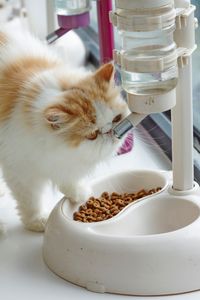Veterinarian Explains How to Protect Pets From Heatstroke

No matter how healthy your dog or cat is, it’s important to keep them safe in the summer heat. When exposed to high temperatures, animals can experience heatstroke, a potentially fatal condition in which they can’t moderate their body temperature. To help you protect your four-legged friend from this serious danger, Montgomery Animal Hospital, veterinarians in Cincinnati, OH, offers a few tips on how to reduce a pet’s risk of heatstroke.
5 Tips for Heatstroke Prevention
1. Never Keep Animals in the Car
A car’s internal temperature can skyrocket to dangerous levels. Within minutes, these temperatures could kill your pet. As such, it’s important to never leave your companion in the car—even if the windows are cracked.
2. Offer Shelter From the Sun
Ideally, pets should be kept indoors in a cool, air-conditioned space during the day. If your dog or cat does go outside, make sure they have a shaded spot where they can cool off and only let them out for a short time or supervise longer play.
3. Provide Plenty of Water
 To reduce their internal body temperature, dogs will pant to release moisture from their lungs to cool off the inside of their bodies. Cats, on the other hand, will groom their fur to coat their bodies with a cool layer of moisture. In either case, both animals lose moisture to stay comfortable in the heat—a process that can dramatically increase the risk of dehydration and heatstroke. As such, it’s important to make sure your pet always has access to ample supplies of cool water to stay hydrated.
To reduce their internal body temperature, dogs will pant to release moisture from their lungs to cool off the inside of their bodies. Cats, on the other hand, will groom their fur to coat their bodies with a cool layer of moisture. In either case, both animals lose moisture to stay comfortable in the heat—a process that can dramatically increase the risk of dehydration and heatstroke. As such, it’s important to make sure your pet always has access to ample supplies of cool water to stay hydrated.
4. Walk When It’s Cooler
While your dog shouldn’t be outside all day during the summer, walks for exercise are still necessary. Rather than exposing your canine companion to the heat, try to schedule walks during a cooler time of the day—such as the early morning or evening when the sun isn’t out.
5. Respond to Heatstroke Symptoms
To recognize heatstroke early on, look for common warning signs, such as rapid panting, high heart rate, fever, respiratory problems, and fatigue. If symptoms are minor, you might be able to cool your pet off by bathing them or covering them with a cold pack. If your animal is unresponsive or displaying severe symptoms—such as vomiting or seizure—visit a veterinarian immediately for emergency care.
If your pet is showing signs of severe heatstroke—don’t wait to seek care. Instead, visit the Montgomery Animal Hospital or one of the 24 hour emergency clinics in Cincinnati. Providing comprehensive and compassionate care, this local veterinarian can quickly identify heat-related illness and provide treatment to minimize potential health risks. To learn more about the state-of-the-art resources this provider offers, visit the pet hospital online. To schedule an appointment, call a friendly staff member at (513) 791-7912.
About the Business
Have a question? Ask the experts!
Send your question

